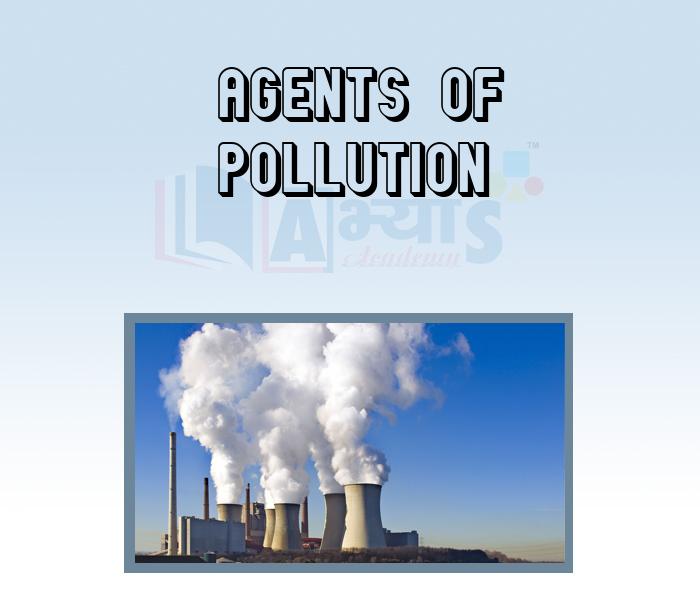Agents Of Pollution











Agents Of Pollution
Agents of Pollution: Radiations can be categorised into two main groups
(i) non-ionizing (e.g., ultraviolet) and
(ii) ionizing (e.g., X-rays, alpha-beta, gamma rays, protons, and neutrons).
The sun is a source of spectrum of radiations such as radio waves, infrared rays, ultraviolet rays, X-rays, gamma and cosmic rays. In addition, radioactive isotopes given off by subatomic particles such as protons, neutrons electrons, and helium nuclei called alpha-particles, in the process of decomposition, from an unstable state to a more stable condition.
Chemical Hazards: There are several chemicals which affect the living world. Nitrous acid causes an increase in mutatio Similarly, mustard gas, used as poison during World War I, enhances mutations. One of the mon powerful hallucinogenic drugs, LSD, causes increase in abortion, abnormal babies, and chromosomal aberrations in human lymphocytes. The use of insecticides, pesticides and herbicides to control the insects, pests and obnoxious weeds, which damage important crops, are also potential health hazards,
The most glaring example in recent times is the Bhopal gas tragedy on the wintry night of December 1984, which accounted for about 3,000 deaths and injuries to as many as 100,000 individuals The killer gas, methyl isocyanate (MIC), also called cynate methane, is one of the most toxic gases known. It is a volatile, colourless, and tear-producing liquid, highly irritating to the skin, eyes and mucoUS membrane.
Another toxic gas is phosgene, chemically called carbonyl chloride. It was used in chemical warfare in the First World War. Most of these gases affect blood capillaries which have thin walls, and through which water, oxygen and carbon dioxide, exchanges take place.
Students / Parents Reviews [10]
It has a great methodology. Students here can get analysis to their test quickly.We can learn easily through PPTs and the testing methods are good. We know that where we have to practice

Barkha Arora
10thA marvelous experience with Abhyas. I am glad to share that my ward has achieved more than enough at the Ambala ABHYAS centre. Years have passed on and more and more he has gained. May the centre flourish and develop day by day by the grace of God.

Archit Segal
7thMy experience with Abhyas academy is very good. I did not think that my every subject coming here will be so strong. The main thing is that the online tests had made me learn here more things.

Hiya Gupta
8thBeing a parent, I saw my daughter improvement in her studies by seeing a good result in all day to day compititive exam TMO, NSO, IEO etc and as well as studies. I have got a fruitful result from my daughter.

Prisha Gupta
8thAbhyas Methodology is very good. It is based on according to student and each child manages accordingly to its properly. Methodology has improved the abilities of students to shine them in future.

Manish Kumar
10thI have spent a wonderful time in Abhyas academy. It has made my reasoning more apt, English more stronger and Maths an interesting subject for me. It has given me a habbit of self studying

Yatharthi Sharma
10thMy experience with Abhyas is very good. I have learnt many things here like vedic maths and reasoning also. Teachers here first take our doubts and then there are assignments to verify our weak points.

Shivam Rana
7thIt was good as the experience because as we had come here we had been improved in a such envirnment created here.Extra is taught which is beneficial for future.

Eshan Arora
8thIt was a good experience with Abhyas Academy. I even faced problems in starting but slowly and steadily overcomed. Especially reasoning classes helped me a lot.

Cheshta
10thAbout Abhyas metholodology the teachers are very nice and hardworking toward students.The Centre Head Mrs Anu Sethi is also a brilliant teacher.Abhyas has taught me how to overcome problems and has always taken my doubts and suppoeted me.
